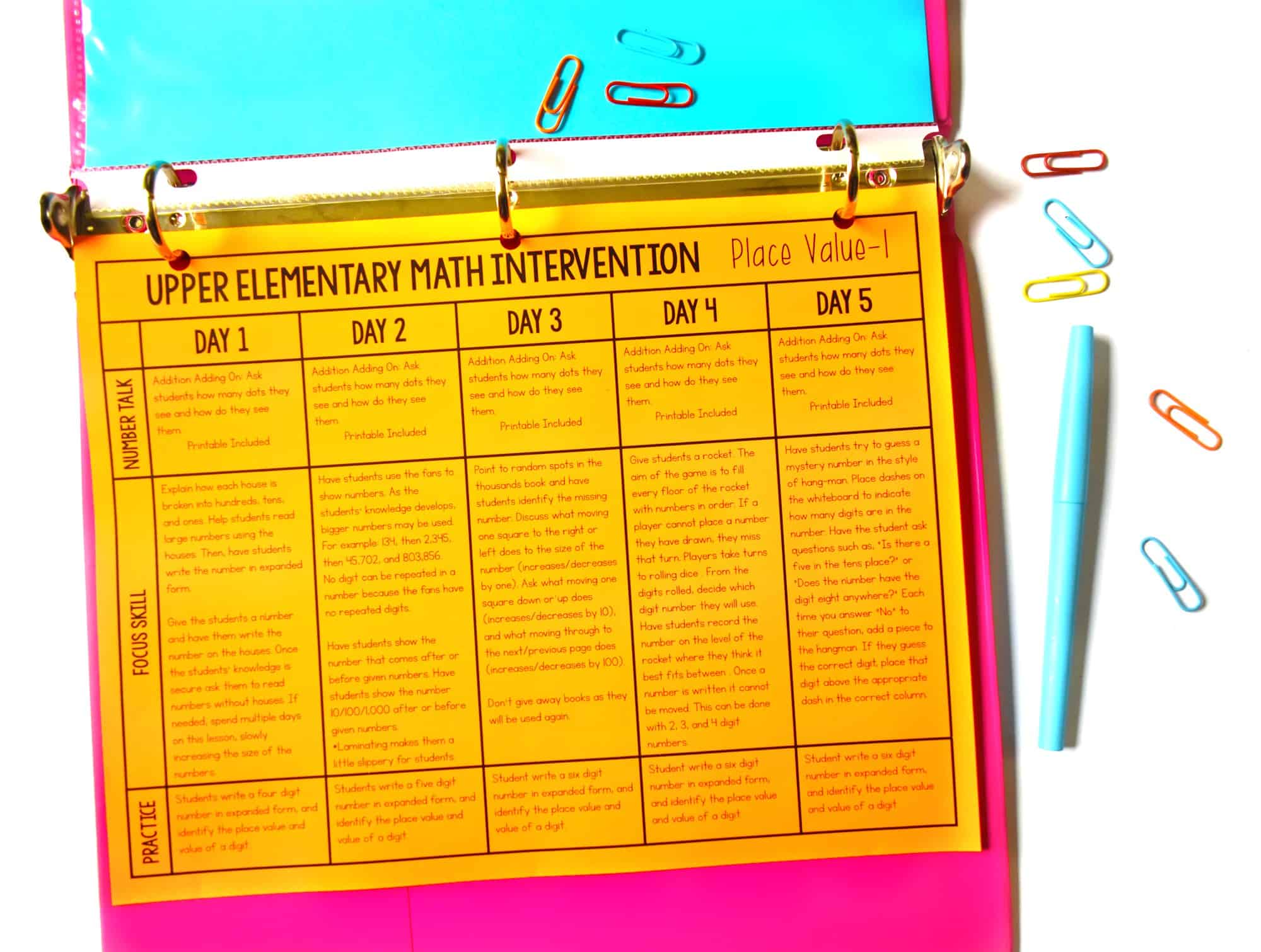
Place value interventions are essential for students with difficulty in math. There is a very big difference between getting place value questions correct on a quiz or being able to identify the place value of value of a digit in a number and truly understanding place value. When I begin remediating students in math, I almost always find that the root of the student’s difficulty in math is a lack of number sense. I often bring students back to the very basics of place value, before moving the student forward to larger numbers or new math concepts. This post shares some of the place value intervention lessons from my Math Intervention pack that I use to help my students understand place value.
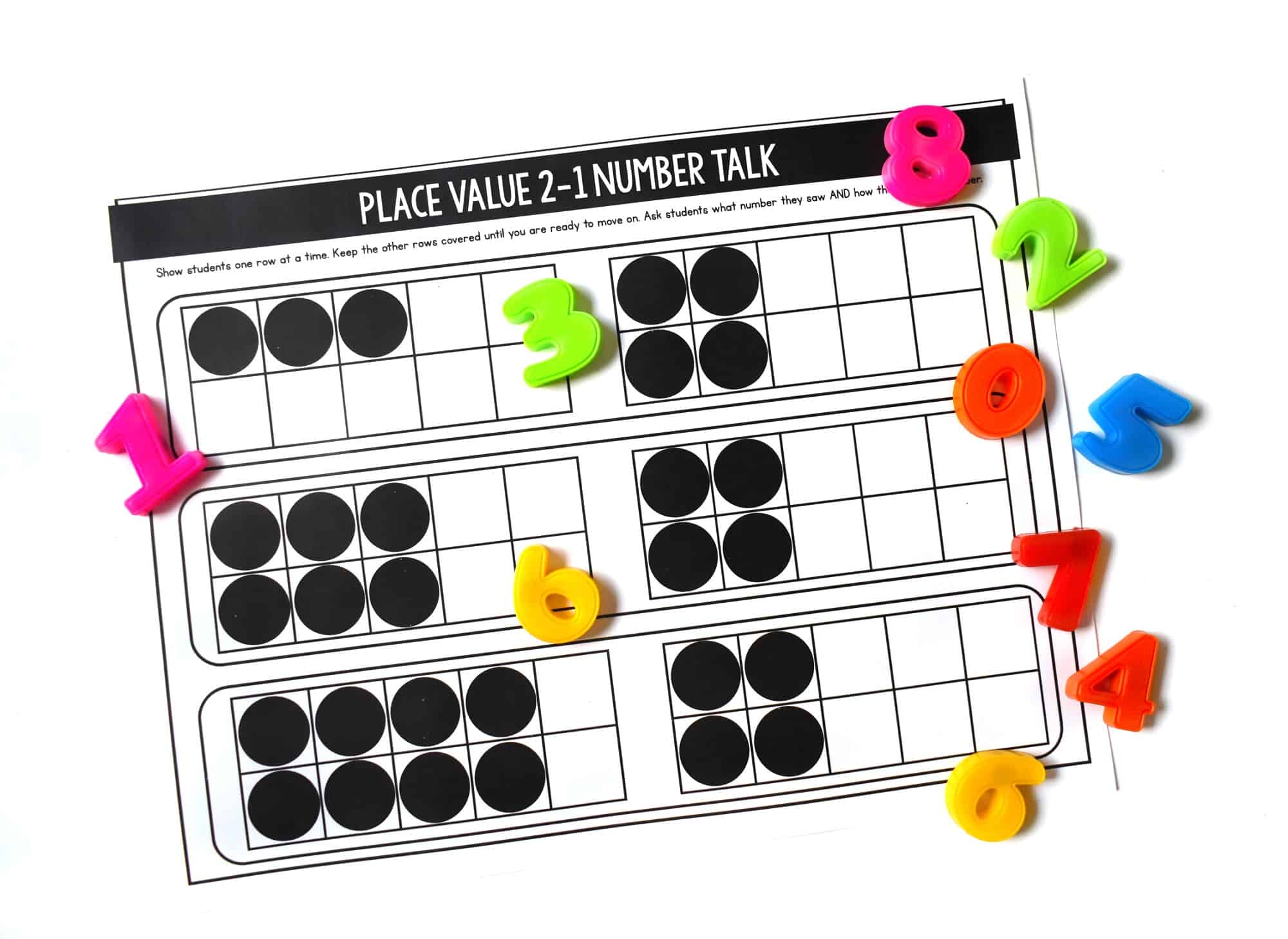
I begin each lesson with a basic number talk. This is typically easy for my fourth graders, but a week or two of practice certainly won’t hurt students. This portion of the lesson should only take 2-3 minutes to complete. I show students one ten frame at a time, and students should quickly identify the amount shown. This will give students practice substituting numbers. The number talks quickly become more challenging, but this is a great starting place with number talks.
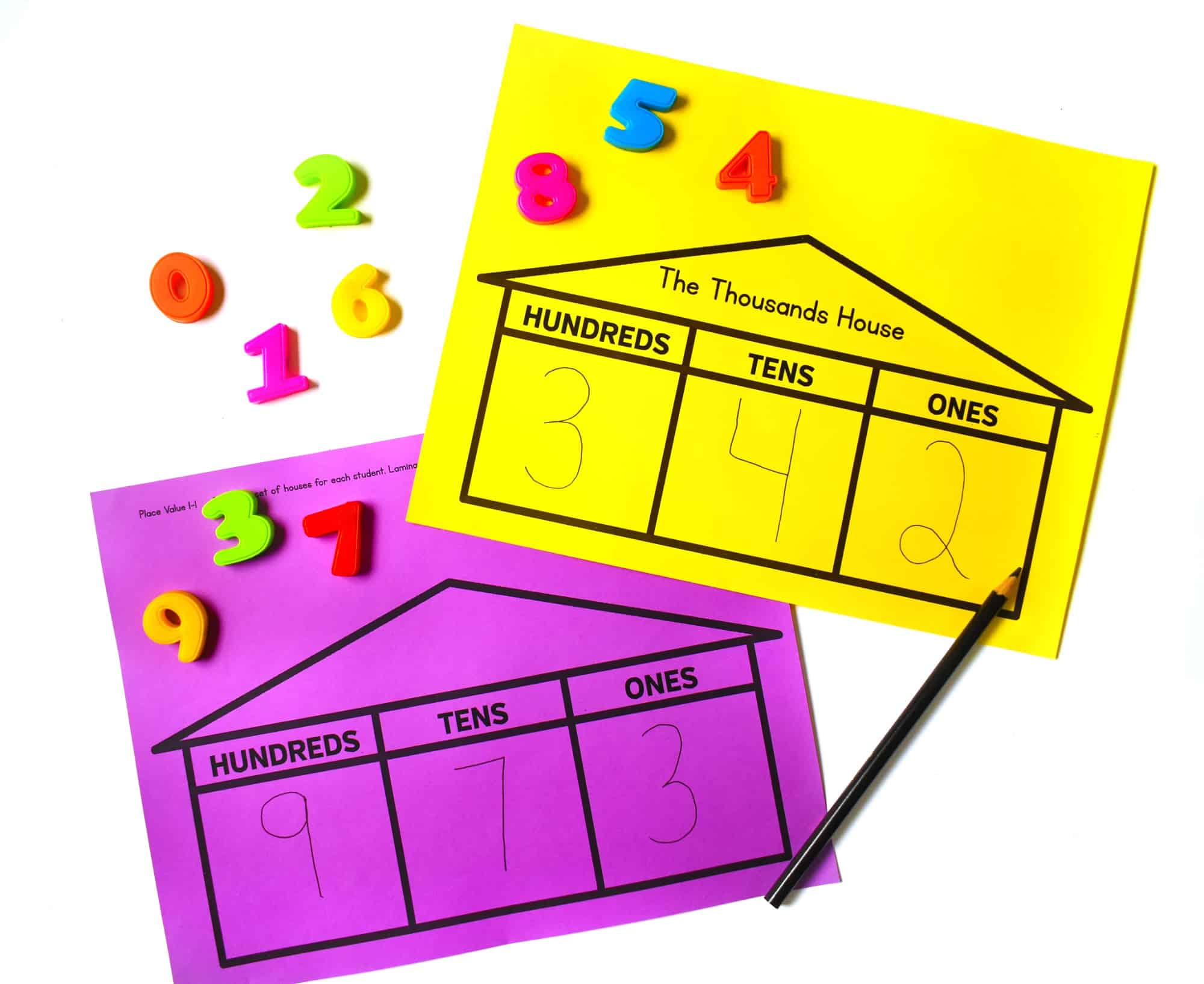
Place Value Intervention Lessons
The earliest place value intervention lessons have students read and write numbers using place value houses. I start with simple 2-digit numbers and work my way to larger and larger numbers. As I teach this lesson, I have students try to read larger numbers without the place value houses. I also have students build examples of the numbers with base-ten blocks. I let my students guide how fast I work my way through the lesson. If I see that the group needs more time with this lesson, I simply spend another day on it. I love the feeling on not needing to rush, and I think my students do too.
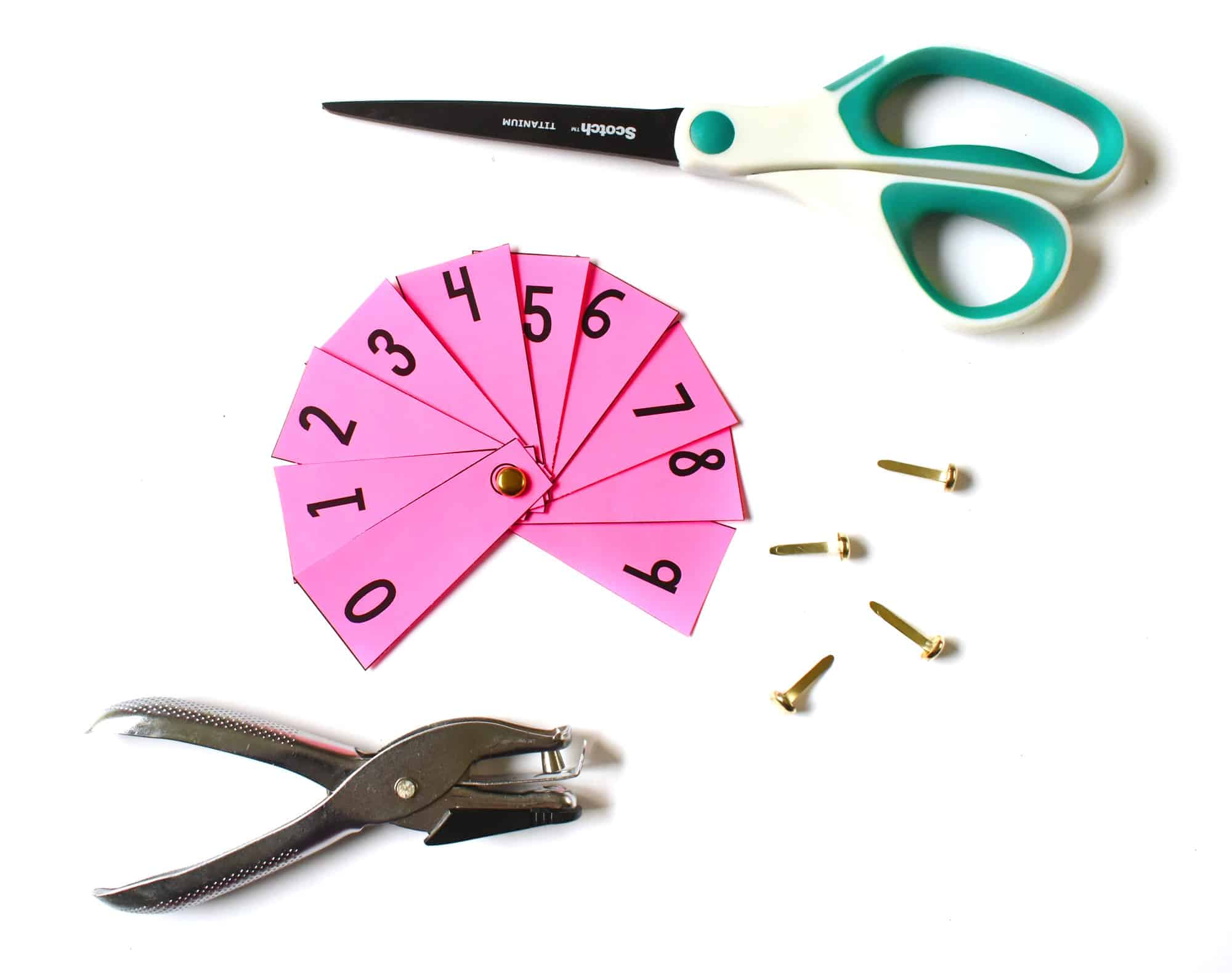
Another reading and writing numbers place value intervention that my students enjoy is a place value fan. They can move the numbers around, so that they can build and read a variety of numbers. If you do this lesson, be sure to NOT laminate the numbers. Mine were way too slippery. The great thing about the fans is that you can have students create any size number.
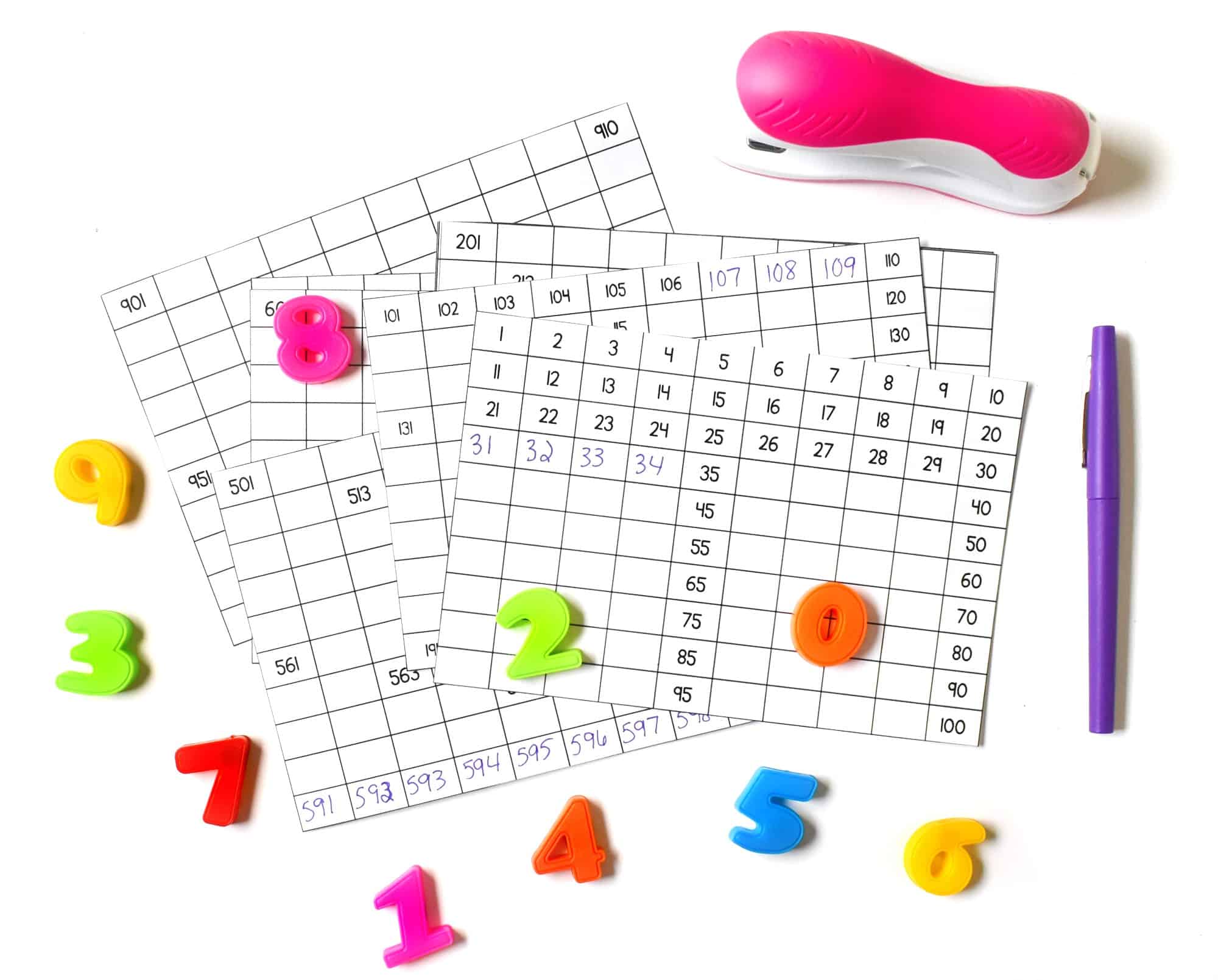
Once students are comfortable reading and writing larger numbers, I have students complete a thousands booklet activity. I point to random spots in the thousands book and have students identify the missing number. We discuss what moving one square to the right or left does to the size of the number (increases/decreases by one). I also ask what moving one square down or up does (increases/decreases by 10), and what moving through to the next/previous page does (increases/decreases by 100).
Rocket Activity
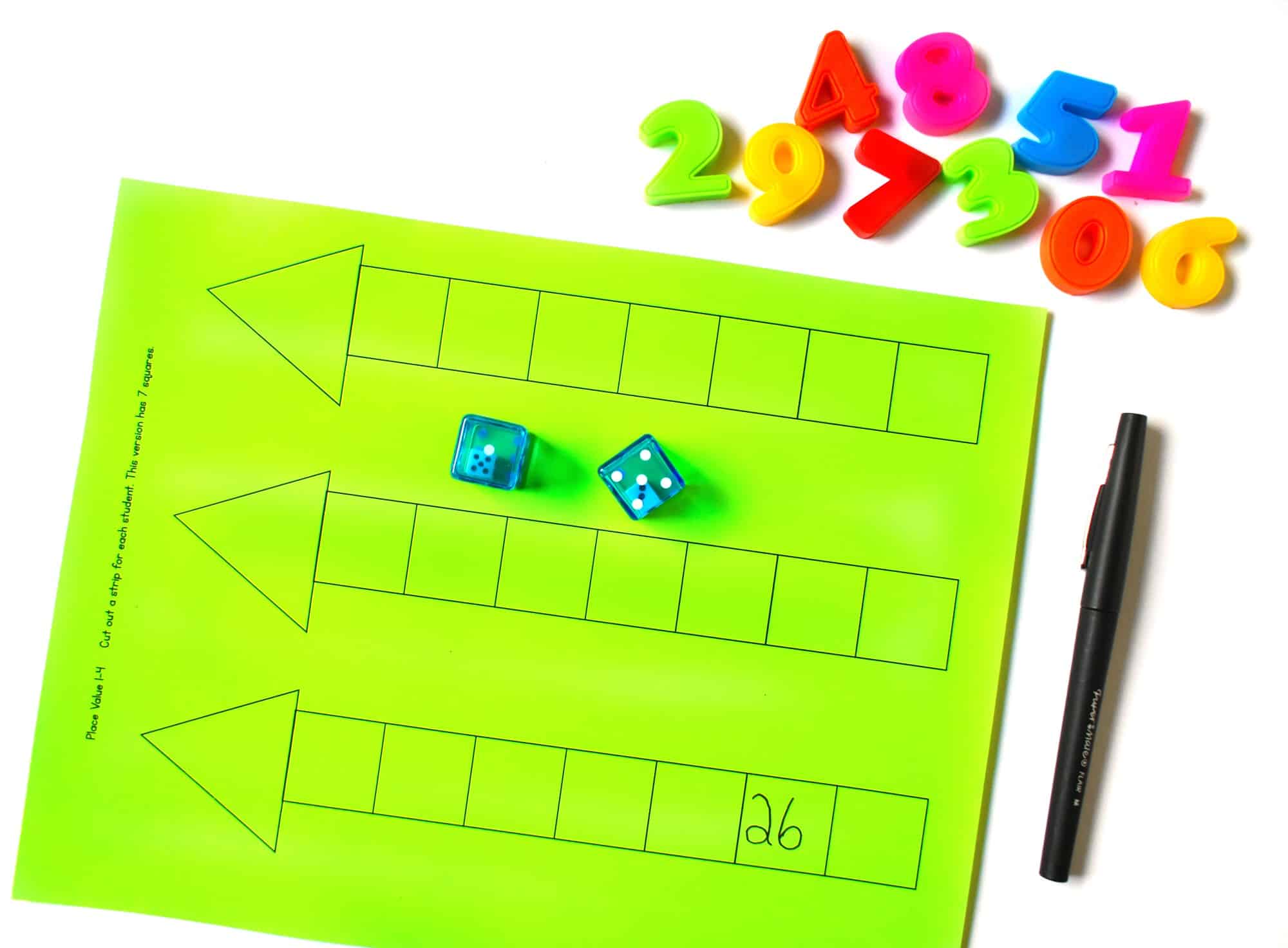
I almost skipped this rocket activity, because I thought it would be too easy for my group, but I was oh-so wrong. Instead, it was extremely challenging for my students. The aim of the game is to fill every floor of the rocket with numbers in order from least to greatest. Students will roll two dice to create a 2-digit number and will place that number on the rocket. If a player cannot place a number they have rolled, they miss that turn. Students will record the number on the level of the rocket where they think it best fits between, and once a number is written it cannot be moved. This can be done with 2, 3, and 4 digit numbers. This forces students to think about the size of numbers and what numbers are between, more, and greater than given numbers.
Hangman
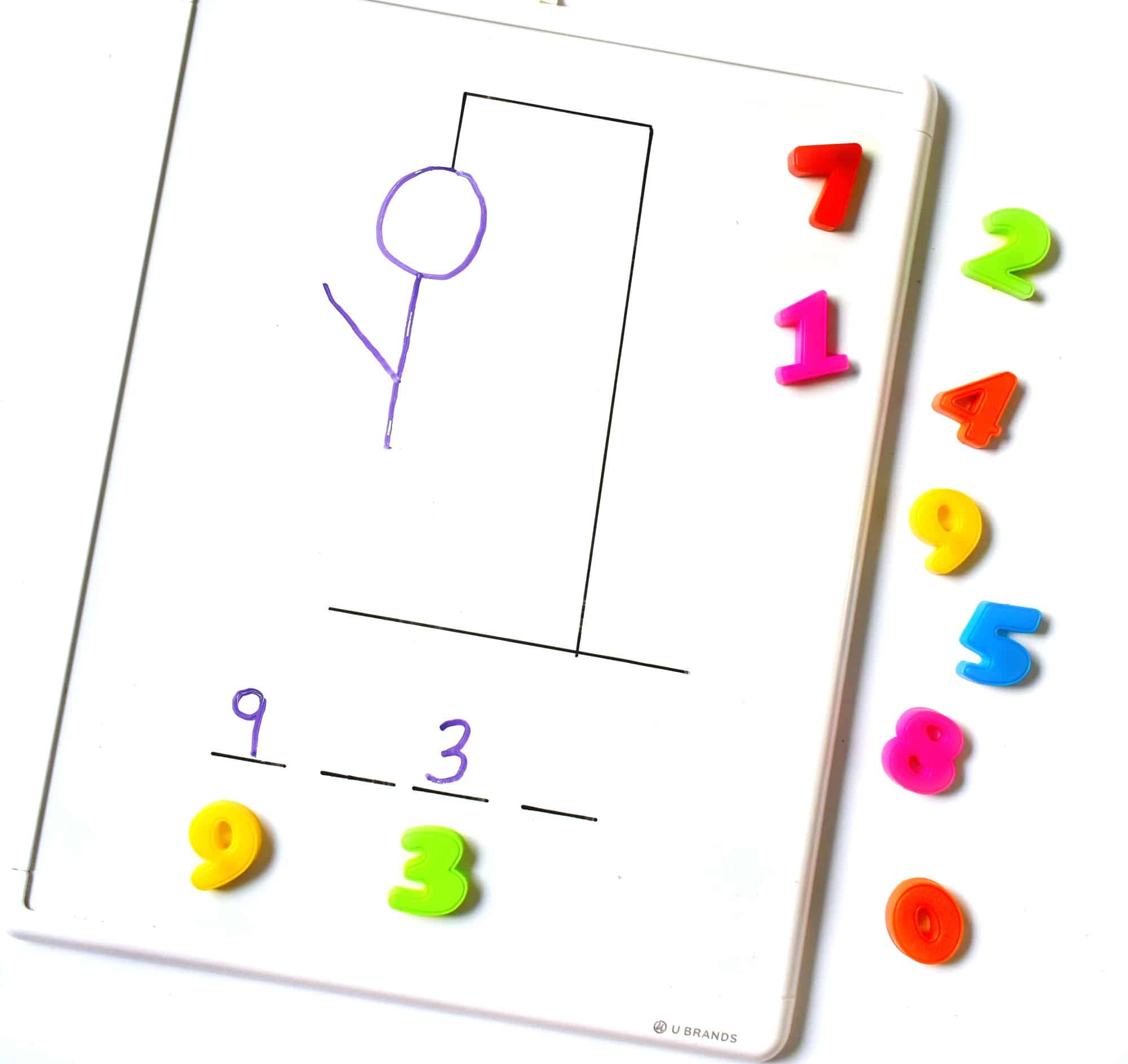
Another fun place value remediation game is to play hangman with numbers. In this activity, I have students try to guess a mystery number in the style of hang-man. Place dashes on the whiteboard to indicate how many digits are in the number and have the student ask questions such as, “Is there a five in the tens place?” or “Does the number have the digit eight anywhere?” Each time the answer is “No” to the question, add a piece to the hangman. If they guess the correct digit, place that digit above the appropriate dash in the correct column. This requires students to think abstractly about place value concepts.
Place Value Interventions – Odometer Concept
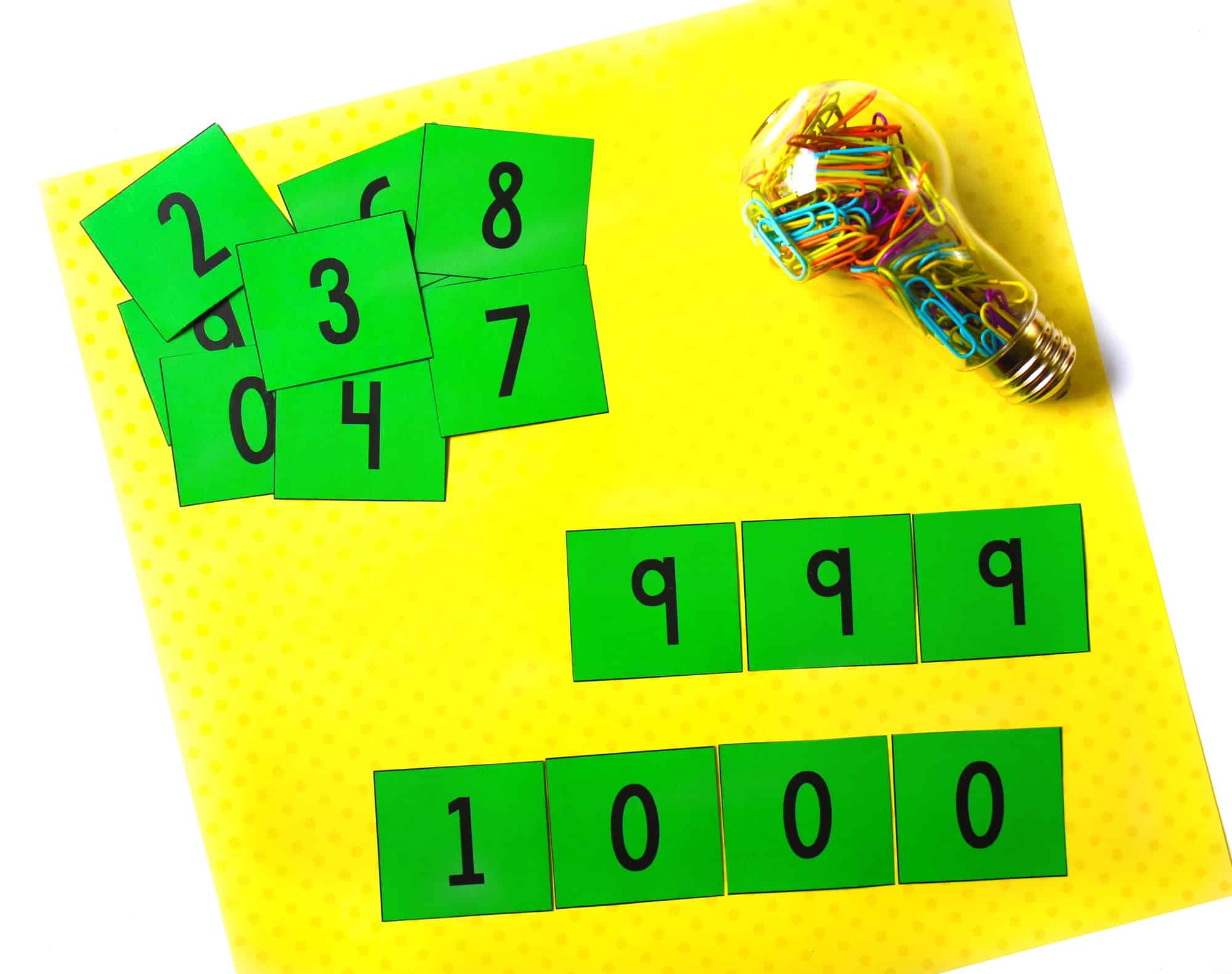
This is the place value intervention activity that surprised me most, as I thought it was completely obvious. Once again, I was wrong. I had students use number cards to recreate counting sequences in a way that’s similar to a car odometer. I had students place the 9 card in front of them. Ask, “What will happen when one is added?” Discuss how adding one rolls nine over to 10 and that another counting place (tens) is needed. Have students count in ones from 95 until 99 rolls over to 100. Then, start with 93 and add 10 to it. Repeat with other numbers. As students show understanding, move to larger numbers. I had a few who absolutely struggled going from 999 to 1,000, which let me know that this lesson is exactly what they needed. We got out the base-ten blocks and build 999 and added a one to see what would happen.
Color Counters
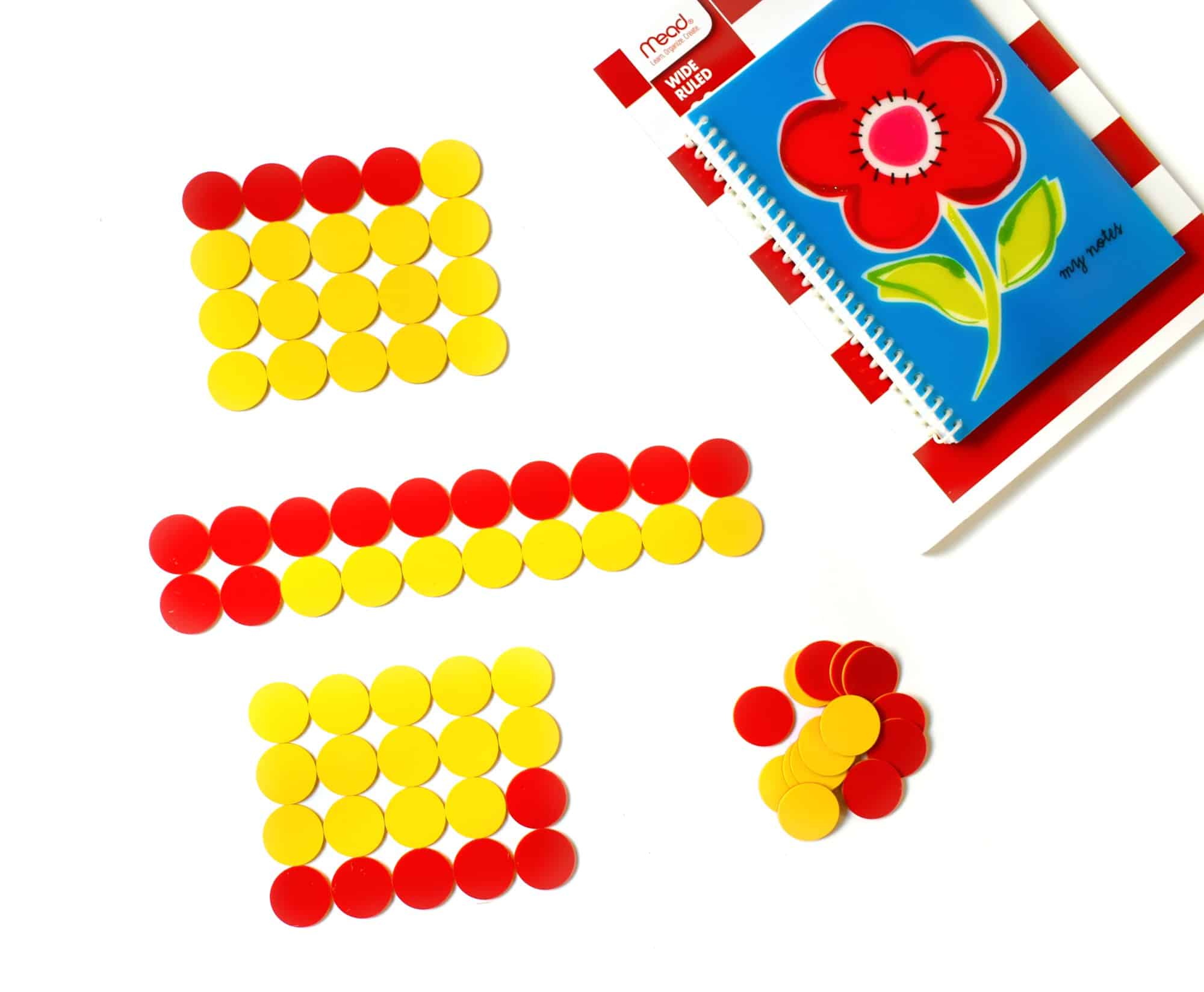
This purpose of my next place value intervention lesson is to allow students to further develop the idea of part-part-whole relationships. I gave students two color counters, and I had students determine how many different combinations for a number they could make using two or more parts. I encouraged students to read the design in two parts. Ex: 5 and 10 make 15. When doing this activity, I continue with a variety of numbers.
Place Value Interventions – Thousands Booklet
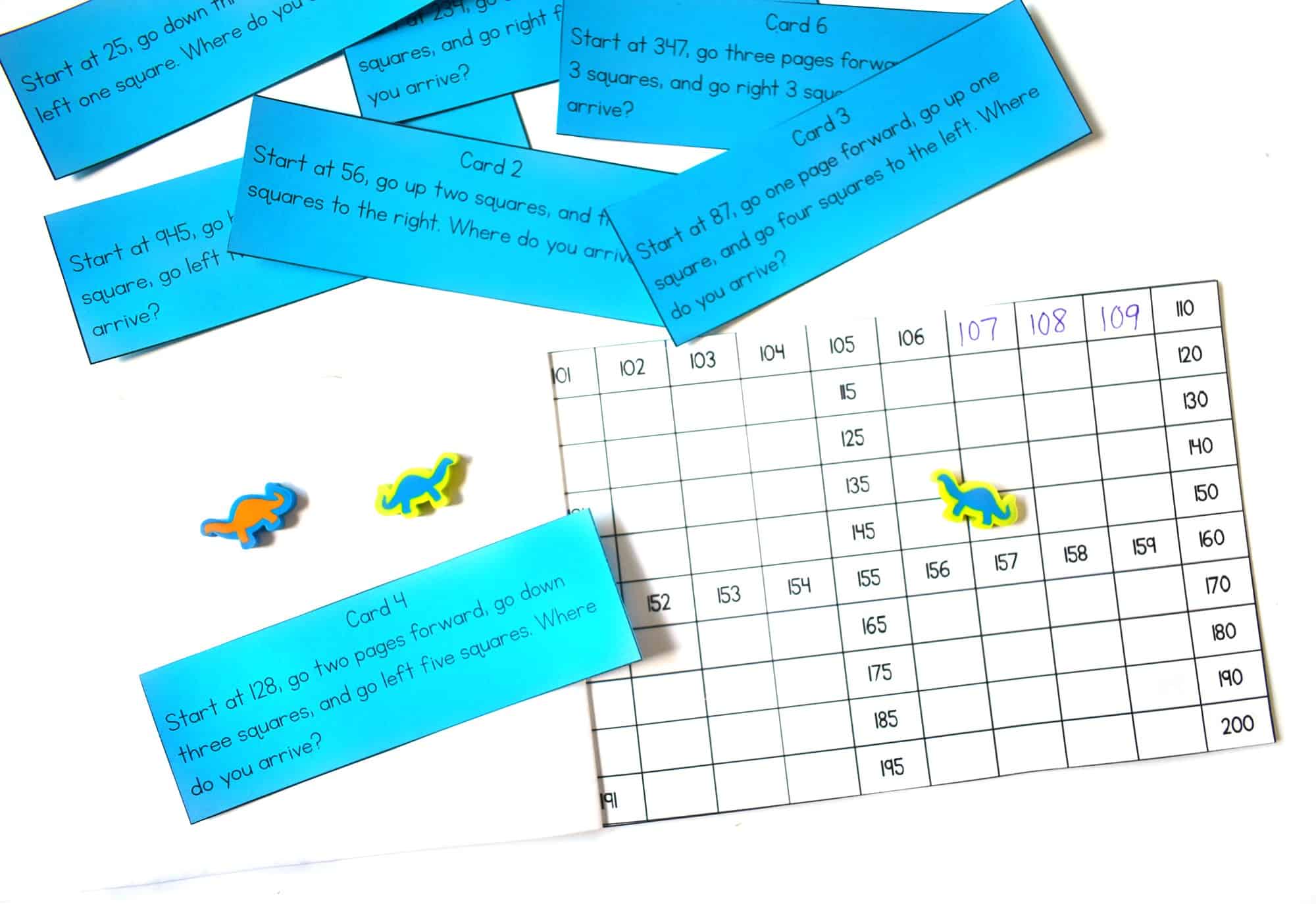
Once students are developing an understanding of reading and writing numbers, as well as parts and wholes, I use the thousands booklet to help students understand numbers through 1,000. We discuss what moving one square to the right or left does to the size of the number (increases/ decreases by one). Ask what moving one square down or up does (increases/decreases by 10), and what moving to the next/previous page does (increases/decreases by 100). Once students are comfortable with the chart, I have students a place value task card with specific directions on each card. Students have to use their thousands chart to complete each card. This is also a great way to help students conceptually think about addition and subtraction with multiples of ten and hundred.
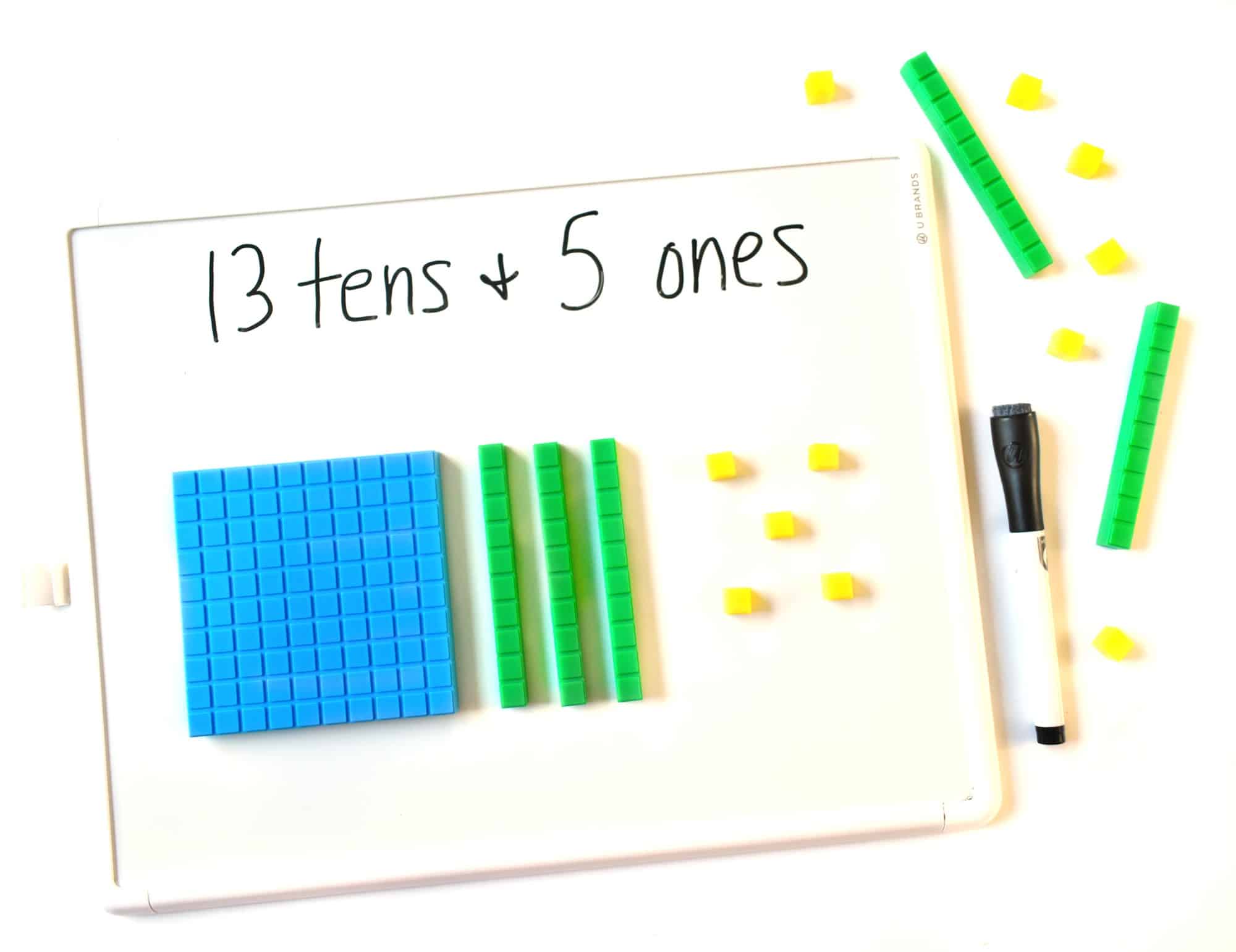
In another place value intervention activity, I ask students what number they would write to show _____ tens and _____ ones. Students should use numbers like 13 tens and 5 ones, or 17 tens and 5 ones where the value of the tens digit will exceed 100. Have students model the numbers with base-ten blocks. This is also a great transition lesson into regrouping with addition and subtraction.
You can access all of the place value remediation lessons in this post here. You can read more about the intervention bundle here.


